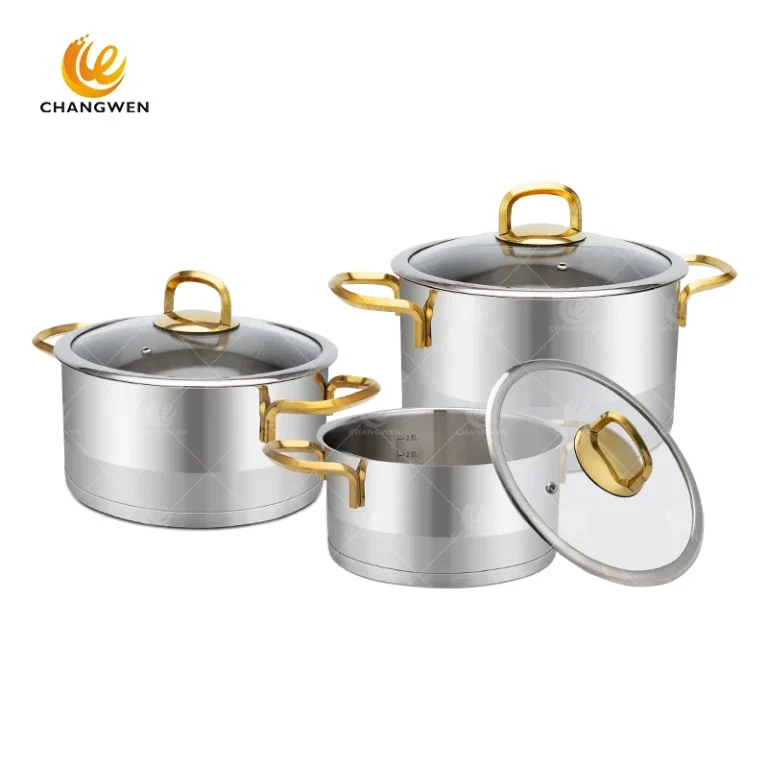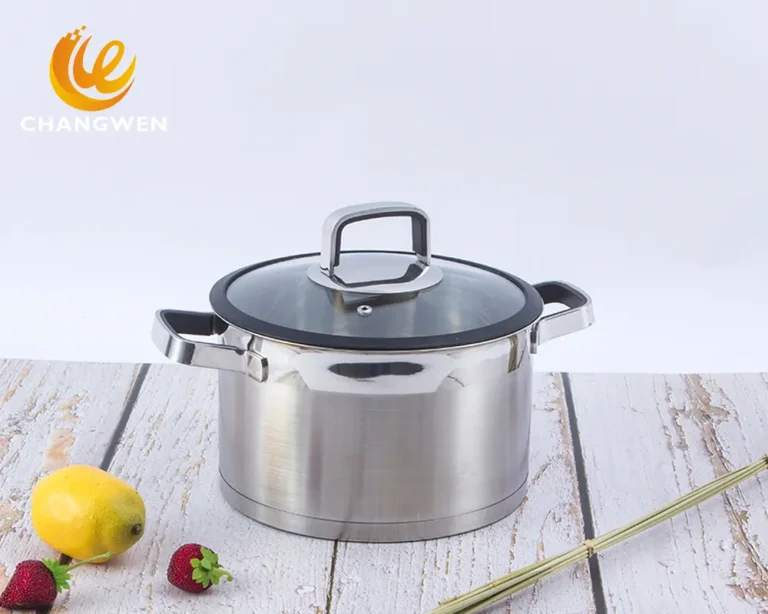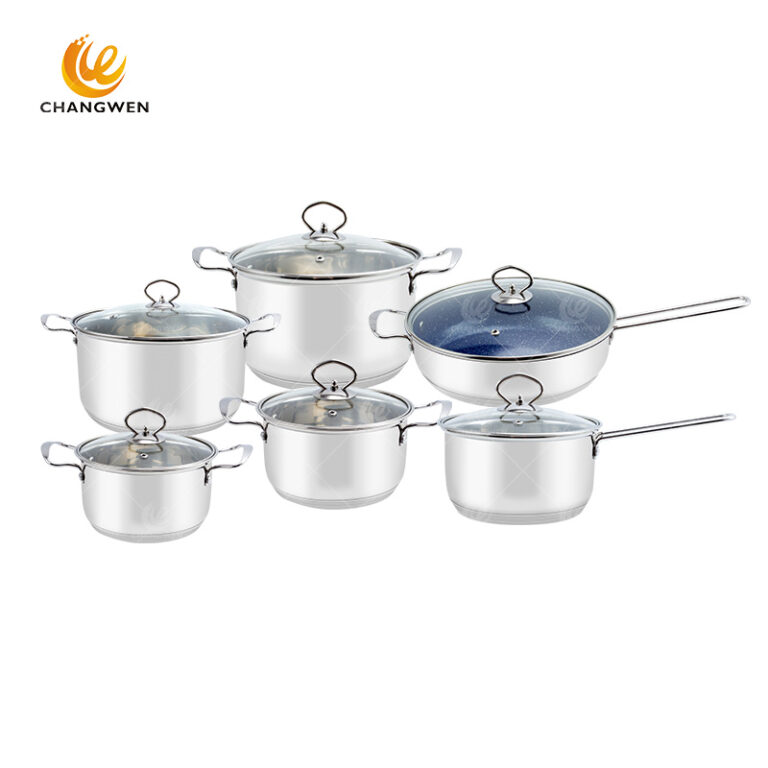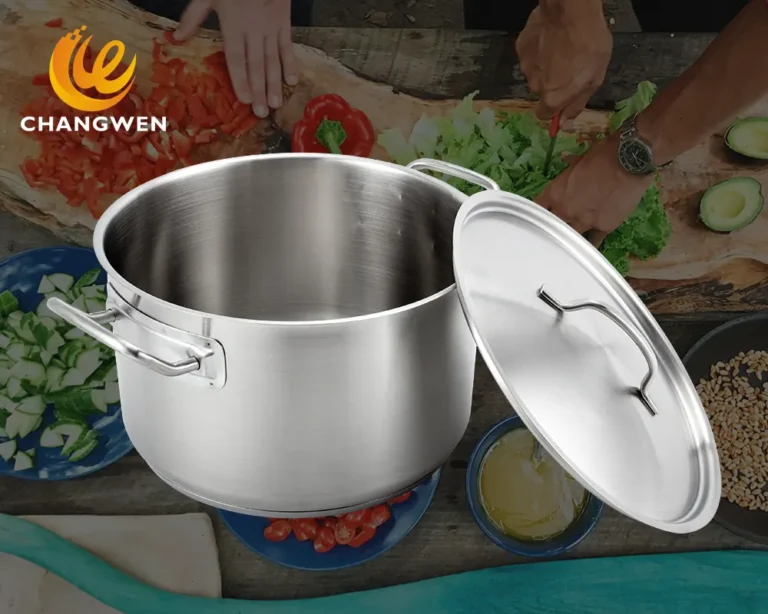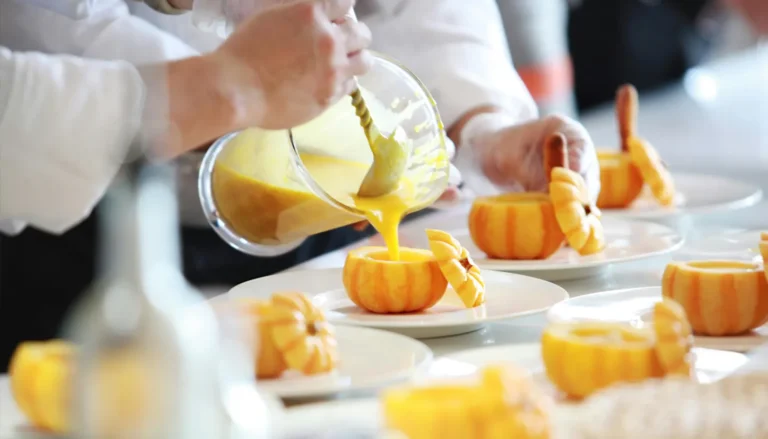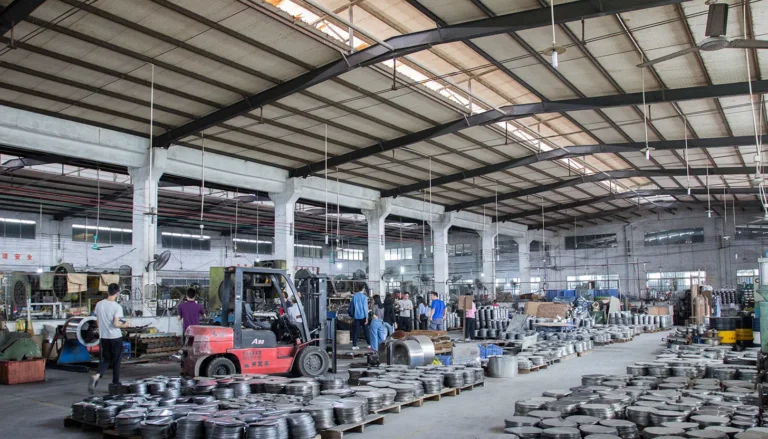In the diverse world of cookware, with materials ranging from stainless steel to ceramic and cast iron, glass cookware has carved out its own unique niche. Known for its stylish looks and versatility, glass cookware is growing in popularity among chefs and home cooks. This article delves into the many benefits of glass cookware, how to choose the right one for your kitchen, and tips for maintaining it.
Table of Contents
Introduction
For centuries, glass has been a go-to material for cooking and storage due to its health benefits and ability to withstand high temperatures. From the humble early days of glassware to today’s innovative, versatile designs, glass cookware has evolved significantly while retaining its core appeal.
Overview of the History and Evolution of Glass Cookware
Glass cookware has a rich history that dates back to ancient times, with its earliest use in Mesopotamia and Egypt for decorative objects. The Romans advanced glass making, but it wasn’t until the 19th century that glass could withstand high cooking temperatures. A significant breakthrough came in 1915 with the invention of Pyrex by Corning Glass Works, introducing borosilicate glass cookware that was resistant to thermal shock. This innovation made glass cookware widely popular for its durability, safety, and versatility. Over the years, improvements like tempered soda-lime glass, better design features, and a focus on sustainability have made modern glass cookware an essential, eco-friendly choice in kitchens worldwide.
Advantages of glass cookware
Glass boasts several unique properties that make it an exceptional material for cookware:
Non-Reactive: One of the most valued properties of glass cookware is its non-reactivity. Unlike metals, glass does not react with acidic or alkaline foods, meaning it won’t impart metallic tastes nor will it corrode over time. This ensures the flavor and purity of your food remain unaltered.
Thermal Resistance: High-quality glass cookware can withstand both high oven temperatures and sudden temperature changes, making it suitable for a range of cooking tasks. Borosilicate glass, in particular, is renowned for its ability to tolerate thermal shock.
Transparency: The clear nature of glass allows chefs and home cooks to monitor their food as it cooks, reducing the risk of overcooking and allowing for visual appeal in food presentation.
Hygiene and Maintenance: Glass surfaces are non-porous and smooth, making them resistant to bacterial growth, odors, and staining. These surfaces are easy to clean and don’t retain residues or odors from previous meals.
Energy Efficiency: Glass cookware distributes heat evenly, which helps in cooking food thoroughly and efficiently. Although it takes a bit longer to heat up, once hot, it retains heat well, contributing to energy saving in the kitchen.
Versatility: It’s safe for use in the oven, microwave, refrigerator, and freezer, making it exceptionally versatile. Some glass cookware can directly transition from the freezer to the oven without the risk of breaking.
Environmental Friendliness: Glass is a sustainable choice; it’s made from abundant natural resources and is fully recyclable. Using glass cookware reduces the need for disposable cooking materials and contributes to a lower environmental footprint.
Aesthetics: Glass cookware has a timeless aesthetic appeal. Its clarity and simplicity fit seamlessly into any table setting, enhancing the visual appeal of the food.
These properties underscore why glass has been a cherished cookware material for generations and continues to be popular in modern kitchens for its health, safety, and environmental benefits, along with its practical and aesthetic advantages.
Choose the right glass cookware
Choosing the right glass cookware involves considering several factors to ensure you get the best performance and longevity out of your kitchenware:
Thermal Shock Resistance: Opt for high-quality borosilicate glass if you need cookware that can withstand rapid temperature changes. If most of your cooking involves gradual temperature changes or you’re cautious about thermal shock, tempered soda-lime glass might suffice.
Compatibility with Cooking Methods: Verify that the glass cookware is suitable for your intended use, whether it’s for baking, stovetop cooking, or microwave use. Not all glass cookware is designed to handle direct stovetop heat.
Size and Shape: Consider what you’ll be cooking to determine the size and shape. If you bake a lot of casseroles, a larger rectangular dish might be more practical. For cakes and desserts, round dishes might be better.
Lids: Look for cookware with matching lids if you need to retain moisture when cooking. Make sure the lids are also oven-safe if you plan to use them for baking.
Handles: Cookware with handles is easier to transport in and out of the oven. Ensure handles are robust and designed to stay cool to the touch if possible.
Ease of Cleaning: While glass is generally easy to clean, check if the cookware is dishwasher-safe for convenience.
Brand and Quality: Invest in cookware from reputable brands known for their quality products. Read reviews to see how the cookware holds up over time.
Safety and Health Considerations: Ensure that the glass cookware is free from harmful chemicals and is certified as food-safe. Most quality glass cookware is lead-free and cadmium-free.
Versatility: If you desire multipurpose cookware, look for pieces that can be used to serve, store, and reheat food. Some glass items are designed to go from oven to table to fridge.
Budget: Determine your budget and look for the best quality within your price range. Remember, investing in high-quality pieces can be cost-effective in the long run due to their durability.
By considering these factors, you can select glass cookware that meets your specific cooking needs, preferences, and budget, while also enjoying the unique benefits that glass offers as a cookware material.
Tips for cooking with glass pots
1.Temperature Management
Glass heats up and cools down more gradually, so be sure to adjust cooking times and temperatures accordingly to prevent over or under-cooking.
2.Cleaning and Maintenance
To avoid stubborn residue and stains, soak your glass cookware and use non-abrasive cleaners to keep it sparkling clean.
3.Avoiding Breakage and Maximizing Lifespan
Proper handling procedures, such as not placing hot glassware on a cold surface, will maximize the lifespan of your glass cookware.
Innovative features of modern glass cookware
Modern glass cookware has seen several innovative features designed to enhance its usability, safety, and versatility in the kitchen:
Improved Thermal Resistance: Advances in materials like borosilicate glass have increased the thermal shock resistance of modern glass cookware, allowing it to withstand greater temperature extremes.
Microwave Safe: Many modern glass cookware pieces are explicitly designed to be microwave safe, which is not always the case with metal cookware.
Multipurpose Designs: Some glass dishes come with lids that double as serving trays or with plastic lids for easy storage of leftovers in the fridge or freezer.
Stackable Sets: Glass cookware sets are designed to nest within each other, saving valuable storage space in the kitchen.
Easy-Clean Surfaces: Many glass cookware items feature special coatings that make cleanup easier, preventing food from sticking without the need for excessive scrubbing.
Environmentally Friendly: Manufacturers often highlight the eco-friendly nature of glass cookware, promoting products made from recycled materials and emphasizing the recyclability of glass.
BPA-Free Lids: For cookware that comes with lids, manufacturers now commonly use BPA-free plastics for health and safety reasons.
Oven-to-Table Convenience: Glass cookware is designed with aesthetics in mind, so it looks good on the table as well as in the oven. This “cook-and-serve” approach reduces the number of dishes used and saves time.
Induction Compatibility: Some glass cookware is now being designed with induction-compatible bases, expanding its usage to the induction cooking market.
Integrated Measuring: Glass cookware, such as measuring jugs, may include integrated measuring guides, eliminating the need for additional measuring tools.
Decorative Designs: Beyond the classic clear glass, some cookware features decorative patterns or colors to enhance the visual appeal.
Improved Handles and Rims: Handles might be ergonomically designed for a better grip, and rims are created to be drip-free to make pouring liquids neater and more precise.
Stain and Odor Resistance: Advanced materials and coatings are used to ensure that the glass does not hold onto stains or odors, keeping it looking and smelling clean over time.
Lid Vents and Straining Features: Lids for glass cookware may include built-in vents to release steam or straining holes that align with pouring spouts for easy draining.
By incorporating these innovations, modern glass cookware addresses many of the needs of contemporary cooks, providing a more enjoyable and efficient cooking experience.
Care and maintenance of glass cookware
Caring for and maintaining your glass cookware properly can extend its lifespan and keep it looking great. Follow these care and maintenance tips:
Avoid Thermal Shock: Do not subject glass cookware to extreme temperature changes. Let it cool down before washing or putting in cold water, and avoid transferring it directly from the freezer to the oven.
Gradual Heating and Cooling: When using glass cookware, particularly on a stovetop or broiler (if allowed), heat and cool it gradually. Sudden changes in temperature can cause the glass to crack or shatter.
Use Proper Utensils: To prevent scratches, use wooden, silicone, or nylon utensils instead of metal ones.
Clean After Every Use: Always clean your glass cookware after each use to prevent stains and food build-up. Use hot, soapy water and a non-abrasive sponge or cloth.
Soak to Loosen Food: If food is stuck on, soak in hot, soapy water for a while before scrubbing gently with a non-abrasive pad.
Avoid Abrasive Cleaners: Do not use abrasive cleaners or scouring pads on your glass cookware, as these can scratch and weaken the glass.
Dishwasher Safe: Many glass cookware items are dishwasher safe, but check the manufacturer’s recommendations first. Place the glassware securely and avoid crowding during the wash cycle.
Stain Removal: For stubborn stains, use a mixture of baking soda and water to create a paste, apply it to the stained area, let it sit for a few minutes, then rinse off.
Storage: Store glass cookware carefully to avoid chips and cracks. If stacking, place a cloth or paper towel between each piece to prevent scratching.
Regular Checks: Routinely check your glass cookware for any chips, cracks, or scratches. Damaged cookware can be more prone to breaking and should be replaced.
Proper Oven Use: Do not place glass cookware directly under a broiler or on a stove burner unless it’s designed for that purpose. Some glassware is oven-safe but not broiler or stove-top safe.
Lid Care: If the cookware has a lid, make sure you also keep the lid clean and check for any damage. Avoid slamming or putting excessive weight on glass lids.
By following these care and maintenance tips, you can help preserve the performance and appearance of your glass cookware while ensuring its safe use for years to come.
Conclusion
In conclusion, glass cookware offers a blend of aesthetic appeal, durability, and versatility, making it a valuable addition to any kitchen. Its ability to go from oven to table, combined with its ease of monitoring cooking progress, positions it as a preferred choice for many home cooks and professional chefs alike. Furthermore, with modern advancements in glass technology, such as improved thermal resistance and eco-friendly materials, glass cookware continues to evolve to meet the demands of contemporary cooking needs.
However, the longevity and performance of glass cookware heavily depend on proper care and maintenance. By adhering to best practices such as avoiding thermal shock, using the right utensils, and cleaning appropriately, users can significantly extend the life of their glass cookware. Additionally, being mindful of manufacturer instructions and guidelines ensures that the cookware is used within its intended capabilities, further preventing damage and ensuring safety.
Ultimately, with the right care, glass cookware can serve as a reliable, health-conscious, and stylish cooking option that complements the culinary endeavors of those who use it. It encapsulates a balance between tradition and innovation, echoing the dynamic nature of cooking itself.


